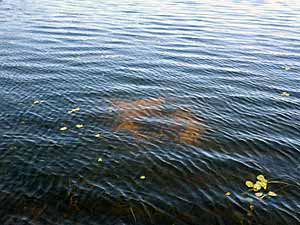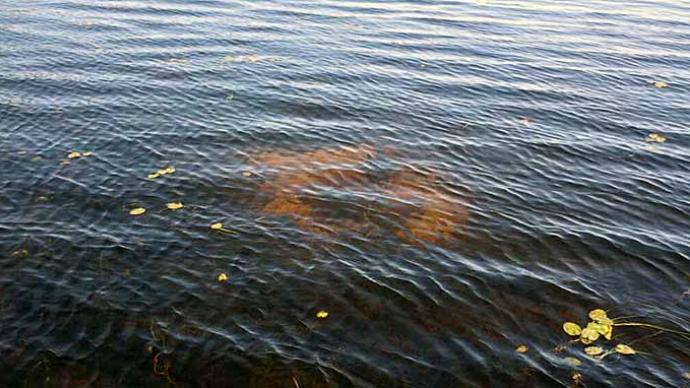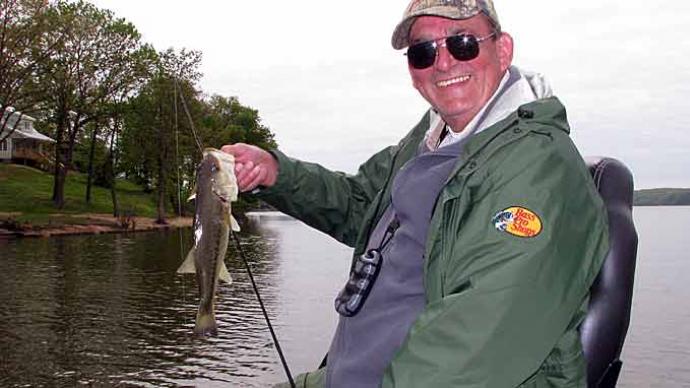
About the time the last bass of the year finishes spawning, Tim Mann starts dreaming about next year. A Florida tournament angler who calls the St. Johns River home waters, Mann enjoys catching bass a lot of different ways. Still, there’s nothing he likes better than “looking at them,” and he’s known as one of the country’s foremost sight-fisherman.
In Mann’s area, sight-fishing begins in late December when bass begin bedding in spring-fed runs. Then, fish move up onto Lake George flats in January. However, he says the most consistent sight-fishing occurs during February and March.
“They’ll start moving toward the banks when the water hits 61 or 62 degrees,” Mann said. “Sixty-four degrees is probably the best temperature for the big sows.”
Florida bed fish get an enormous amount of pressure and are the targets of some of the finest sight-fishermen in the country. That means they become tough customers, and a fisherman must get good at spotting fish and learning to gauge each fish’s personality and adjust strategies accordingly.
“I believe every fish is catchable,” Mann said. “You just have to figure out the right strategy.”
Finding Fishing
Bass will spawn on anything hard, Mann said. In Florida, fish spawn in big groups atop large, broad sandy flats. In a lake with a mucky bottom, Mann looks for beds around shallow stumps or rocks, lily pad roots or anything else hard he can find.
Mann might begin a day searching with his trolling motor down – looking for groups of beds with female fish on them. He’s found that fish tend to bed in like-sized groups, so if the females he spots are smaller than desires, he keeps moving. When he sees the right kind of fish and gets serious about searching an area, Mann breaks out his push pole and moves about very slowly.

Mann is always searching for the fish themselves, but he also studies the beds and looks for other signs of a fish. For example, if he spots a big, clean bed with a male bass on it and sees a boil just off to the side, he can be confident he has just spooked the female off that bed. Even if he doesn’t see a bass, if a big bed simply looks right, he’ll back off and sit motionless for several minutes and then ease up on it, looking for the female.
Catching Them
Sight -fishing is a serious psychology game. Mann begins studying a bass’ mood from the first glimpse. He takes note of how the bass reacts to everything he does, from riding past, to lurking off to the side, to making lures presentations, and he’s always trying to figure out what he needs to do to get a fish to bite.
Mann initially sets up to the side of a bed – staying just close enough to visually track what’s happening – and he’s careful to not cast a shadow on the fish. Often he sits very still for several minutes before making a cast so the fish can get used to his presence. When he does cast, he always lands his bait past the bed, reels back and then drops it in. A cast straight to the bed often spooks the fish.
Some sight-fishermen have multiple rods at the ready, each with a different lure tied on, and they may go through several in the course of fishing a bed. Mann chooses to concentrate on placement of casts and presentations. In fact, he keeps his lure selection incredibly simple, fishing almost exclusively with a Texas-rigged YUM Craw Papi or a Vibra King Finesse Tube, rigging either on a 5/ 0 hook with a 5/16-ounce weight on 20-pound mono.
Finding the right presentation for any given fish is a matter of experimentation. Some will take a bait as soon as it drops into the bed. Others will bite only after the lure sits motionless for a few minutes. Still others have to see some life but without the bait moving much. Mann might jiggle his rod tip with a fairly slack line so that the Craw Papi dances and waves its claws but doesn’t actually move out of the bed. Other times he drags the bait very slowly.
“It might take me five minutes to drag my bait across a bed,” he said.
He moves the bait so slowly for two reasons; it may trigger the fish to strike, and repeated casts to a bed decreases the likelihood that the fish will strike at all.

At times, Mann has to employ very specific strategies to draw strikes from fussy bass – like letting the bait sit absolutely motionless in the heart of a bed for five minutes, then just popping it up a single time. Another approach for finicky females is to move a long cast’s distance away and target the fish strictly by feel.
Managing the males on the beds is another important element of sight-fishing and a big part of the psychology game. In almost all cases, Mann tries to avoid hooking the male until he has caught the female; however, sometime he has to get the male to pick up the bait and move off with it again and again in order to fire up the female and make her strike. Occasionally, when a female simply won’t move onto the bed with the male there, Mann will catch the male as a last-ditch effort.
“When you do that, you have a very limited window to catch the female before she’ll abandon the bed.”
Sometimes the big female is holding nearby but not moving onto the bed. In that case, he simply pitches to her wherever she is staging.
“I’ve caught some big bass doing that – fish others might have considered uncatchable,” he said.
Along with being a game, sight-fishing is an ongoing education for Mann. Every fish he targets each spring teaches him a little more about bass behavior, and you can bet he spends the offseason thinking about how he will apply things he has learned once the bass start moving up again.



